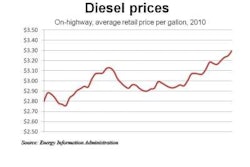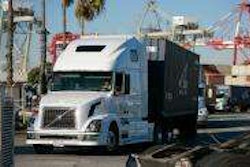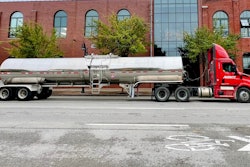According to data released from the Commercial Vehicle Safety Alliance’s (CVSA) Operation Safe Driver campaign, the top three reasons warnings and citations were issued to both commercial and non-commercial vehicle drivers include speeding, failing to use a safety belt, and failure to obey traffic control devices.
Of the warnings issued to commercial drivers, 20.3 percent were for speeding (versus 61.2 percent for passenger car drivers); 4.2 percent were for failure to obey traffic control devices (compared to 5.8 percent for passenger car drivers); and, 2.6 percent were for failing to use a seat belt while operating their vehicle (compared to 2.8 percent for passenger car counterparts).
Citations issued to commercial drivers followed a similar trend, with 13.7 percent for speeding, 4.6 percent for failure to obey traffic control devices and 10 percent for failing to use a seat belt while operating their vehicle. Commercial drivers were issued significantly more warnings and citations in 2010 for failing to buckle up (1,055) versus in 2009 (672).
The fourth annual Operation Safe Driver took place Oct. 17-23, during which time law enforcement officers nationwide pulled over nearly 53,000 commercial and passenger vehicle drivers. Operation Safe Driver was launched in 2007 by CVSA in partnership with the Federal Motor Carrier Safety Administration to address the problem of improving the behavior of all drivers operating in an unsafe manner — either by, in, or around commercial vehicles — and to initiate educational and enforcement strategies to address those exhibiting high-risk behaviors.
“CVSA’s Operation Safe Driver is targeting each and every driver, whether they drive a passenger car or a CMV, and alerting offenders that their poor driving behaviors result in lives lost,” said Stephen A. Keppler, CVSA’s executive director. “We will continue to emphasize this point, through both education and enforcement tactics, until we eliminate those driver behaviors that are specifically linked to causing crashes.”
On the enforcement front, details on the results include:
- 39,784 CMV Roadside Inspections (5.3 percent resulted in the driver being placed out-of-service; 27.4 percent of the Level I Inspections resulted in the vehicle(s) being placed out of service. In 2009, there were 30,294 inspections conducted and a driver OOS rate of 5.3 percent, vehicle Level I OOS rate of 26.1 percent;
- For Drivers: 0.44 violations per roadside inspection (0.44 in 2009); 0.08 OOS violations per roadside inspection (same in 2009); 0.04 citations per roadside inspection (0.04 in 2009);
- For Vehicles: 1.04 violations per roadside inspection (1.12 in 2009); 0.23 OOS violations per roadside inspection (0.19 in 2009); 0.08 citations per roadside inspection (0.05 in 2009);
- 21,555 CMV Driver Traffic Enforcement Contacts: 7,062 warnings were issued (0.33 per contact); 8,724 citations were issued (0.40 per contact); In 2009, there were 20,198 contacts, which resulted in 6,887 warnings (0.34 per contact) and 8,067 citations (0.40 per contact);
- 12,926 Non-CMV Driver Traffic Enforcement Contacts: 7,126 warnings were issued (0.55 per contact); 7,700 citations were issued (0.60 per contact); In 2009, there were 10,917 contacts, which resulted in 3,818 warnings (0.35 per contact) and 10,365 citations (0.95 per contact);
- 31,737 CMV Driver License checks (27,903 in 2009) and 9,878 Non-CMV Driver License checks (8,577 in 2009); and,
- 64 targeted Compliance Reviews on truck and motorcoach operations were conducted on carriers employing the “worst of the worst” commercial drivers of which 53 received a safety rating as a result of the review. Of those fifty-three, 13 carriers (or 20 percent) received a Conditional Safety Rating. (compared to the national average of carriers rated Conditional in 2010 was 23.1 percent); and, eight carriers (or 13 percent) received an Unsatisfactory Safety Rating (compared to the national average of carriers rated unsatisfactory in 2010 was 2.5 percent).













